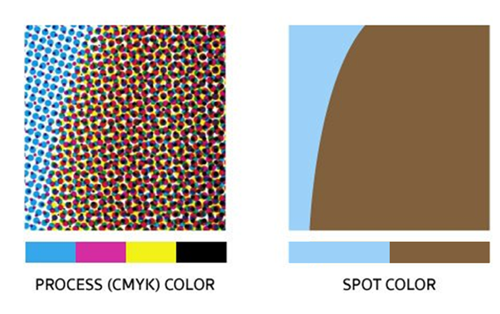Choosing between process color and spot color is crucial for designing a visually appealing casino website. The use of colors can significantly impact the overall user experience, influencing their choice of games and the amount of time spent on the website.
For example, $1 deposit casino sites at https://icasinoreviews.co.nz/1-dollar-deposit-casinos/ often use process colors to create a luxurious, immersive environment with a variety of shades. This luxurious environment is designed to attract a wide range of players and keep them engaged for a long time. However, for logos and individual elements, they use flat colors to maintain consistent and clear coloring across different devices.
PROCESS COLOR VS. SPOT COLOR
The difference begins with the way that colors are produced and how they are applied to the printed surface.
Process Colors
Process color printing is the more commonly used method of color offset printing. It involves “process” colors that are a combination of cyan, magenta, yellow, and black, or CMYK inks. Each process color is comprised of percentages of cyan, magenta, yellow, and black inks.
The ink is not actually mixed together to create the required color. Instead, minute drops of color are laid down so close to one another that the human eye, without the aid of magnification, interprets the mixture of dots as a certain color. The percentages of the four process colors vary, and it’s this variety that produces different hues.
While the range of process colors might seem endless, they actually provide a somewhat limited color range when compared to spot colors. Process printing is typically used when exacting color accuracy and consistency are not a top priority, but things like cost and job completion speeds are a consideration. Things like newspapers, magazines, product packaging and billboards almost always use process colors. It’s the most affordable method, and also the quicker one.

Unlike process printing, spot color printing uses pure and mixed inks that are produced without the use of screens or multicolor dots. Think of spot color offset printing kind of like painting your house. You choose the color, and then apply the premixed medium directly to the surface. Spot color printing does not rely on your eye to interpret anything other than the actual color of the ink.
Spot colors are necessary when color accuracy and consistency across print jobs is crucial. Fine art prints, company logos and color-specific brand elements are often printed using spot colors. Spot color printing features a larger color palette than process colors, which makes more distinct colors possible, such as metallic or fluorescent hues. Each ink also requires its own printing plate and press when applied to designs, mean the print jobs can be costly and can take additional time to complete.
Return to the Tech Trends Newsletter